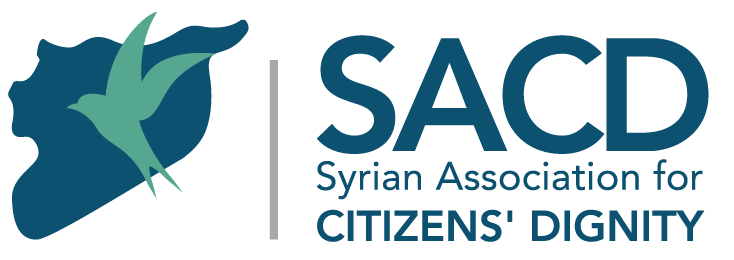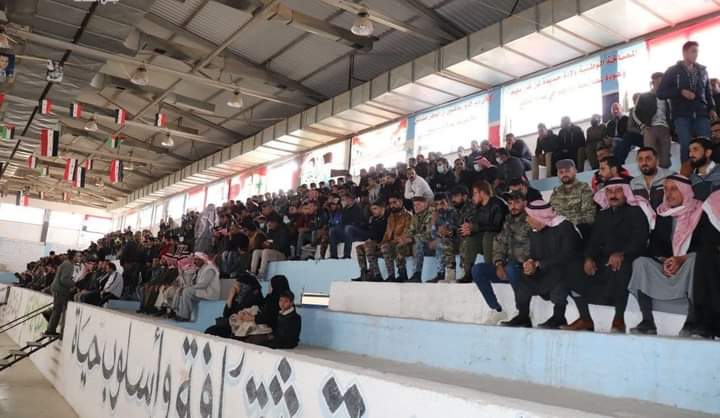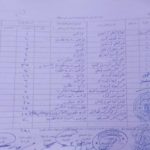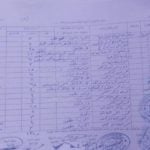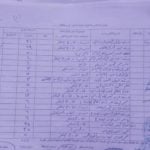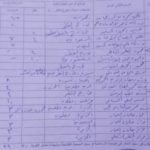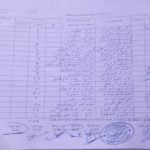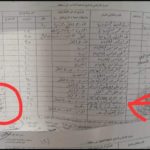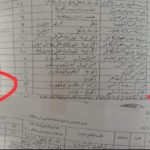The Deir ez-Zor governorate includes the largest city in eastern Syria – and the second largest in Syria – and covers an estimated surface area of 33,000 square kilometers.
Approximately one and a half million people lived in the governorate in 2007, according to the country’s Civil Status Department.
The Euphrates River divides the governorate into two parts: Al-Shamiya to its west and Al-Jazeera to its east.
In early 2018, the Syrian regime forces tightened their control over the western part with the support of Russian forces and foreign militias, nearly three years after ISIS had taken control of the area following the opposition forces’ withdrawal.
Deir ez-Zor differs from other parts of Syria in terms of its predominantly tribal-based demographic structure. All forces active in the region have tried to exploit this over at least the past seven years.
The current difference from the rest of the Syria is seen in the forces operating in the area and controlling terrain.
On the eastern side of the river, the Syrian Democratic Forces (SDF), which is affiliated with the international coalition, controls the area with some Islamic State (ISIS) presence in the area.
On the opposite side, Al-Shamiya, there are many forces that share power, including the Syrian regime alongside local militias affiliated with it, and foreign militias, most notably the Iran’s Islamic Revolutionary Guard Corps (IRGC) and its affiliated militias, as well as the Lebanese Hezbollah.
Russian forces are controlling some sensitive areas in the city of Deir ez-Zor .
It seems that the sharing of powers between all these forces was agreed upon before the start of military operations in the city to expel ISIS, as the Iranian militias did not accept the participation of the Syrian army in taking control of the border city of Al-Bukamal, on the border with Iraq.
This city was chosen later by the militias as a main center for their forces and operations. This was due to its proximity to Iraq first but the fact that it is considered a gateway to Al-Shamia desert, which stretches to the city of Homs in central Syria and from there to the Syrian-Lebanese border. It is also close to the Syrian-Jordanian border.
The city of Deir ez-Zor fared no better than other Syrian cities. As soon as the Syrian regime forces took control of it, the arrests of those who remained began, as did the seizing of properties from residents as a form of revenge.
The partners of the Syrian government in this region aimed higher, however.
Iranian and Iran-linked militias soon showed that they had plans of a sectarian nature, with the results more visible now.
Demographic change is continuing in the city of Deir ez-Zor , the regional capital of a governorate in which Sunnis account for 95% of the population.
The Iranian role became clear in the initial months after it gained control of parts of the region. Militias tried to grow close to the remaining civilians in the region, offering them a helping hand to win their favor and discredit any narrative that might appear against them in the future.
They began to provide aid to them through institutions and associations, most notably the Jihad and Construction Organization and the Peace Organization in the center of Deir ez-Zor Governorate.
The land acquisition process was managed in a way seen as favorable to Iran.
An IRGC military and security official called Hajj Askar was able to purchase several properties in a very short period through brokers and real estate offices, with a value exceeding 400 million Syrian pounds at that time.
Iranian-linked militias’ operations did not stop at buying real estate, however: they also confiscated the properties of displaced people, such as in the city of Al-Bukamal, Al-Mayadin, Al-Ashara and Mohasan.
In the summer of 2020, the Syrian regime began promoting the return of civilians who had been displaced to areas under opposition forces or SDF-controlled areas.
As usual, the regime focused on the media aspect of this operation, broadcasting on state television photos and videos of civilians who had returned to their villages and towns after the Syrian regime invited them.
Only later did it transpire that most of the returnees to those areas are residents of cities under the control of the Syrian government who had fled when military operations began in the region.
Shortly after the launch of a 2020 conference on refugee return called by Russia in the Syrian capital, Damascus, the Syrian regime began to pressure the displaced to return to their areas.
The most conspicuous way they did this was to confiscate their property and assets, claiming they were “ownerless”.
The government then called for these properties to be sold off and the money invested in special accounts.
The Syrian regime largely failed to persuade civilians to return to the areas under its control and asked Russia to help.
Russia has long wanted internally displaced persons (IDPs) back in their homes for economic reasons related to reconstruction.
However, the US and Europe stood firm in calling for the voluntary and safe return of the displaced and the implementation of UN Resolution No. 2254.
By the end of the so-called national reconciliation in the city of Daraa in southern Syria, under the auspices and guarantees of Russia, the focus on reconciliation had shifted to the Deir ez-Zor governorate.
There, however, the Syrian regime promoted the idea of extending its control back to areas east of the Euphrates currently under the SDF.
Approximately 70% of the total population of the governorate lives in this part.
Russian forces aided this by attempting to patrol the western countryside of eastern Euphrates area and used some tribal figures to curry favor with the local society while using them as mediators between the regime forces and the displaced and as guarantors for agreements between them.
State-run SANA news agency quoted the Baggara tribe’s Sheikh Nawaf Al-Bashir as saying: “It is like a message to all our sons who have been deceived”.
Al-Busraya tribal sheikh Muhanna Al-Fayyad called the reconciliation process “comprehensive and final,” calling on all the people of the province in Syria and abroad “to take this opportunity”.
On November 24, 2021, Raed Al-Ghadban, a member of the Central Committee and Secretary General of the Baath Party, announced a presidential amnesty from Bashar Al-Assad for those wanted by the authorities as well as those who had defected from the country’s military during the conflict.
Each person who goes through the stipulated stages is given a “reconciliation card” that allows him to move within the areas of the country under the control of the Syrian regime.
The Syrian regime had announced earlier that it had conducted a “reconciliation of status” for all officers and soldiers who had defected from the Syrian regime army, in addition to those who hadn’t done their compulsory military service and those who had not taken part in armed conflict against the Syrian regime and its allies, including Iran-linked militias and Russian forces. Those who have undergone a reconciliation are given, after appearing before the committee, a document confirming that the “reconciliation” process has taken place. They are warned against traveling outside the governorate until after they have received a document attesting to their not being wanted by the authorities, which must be issued within 7-10 days.
After this period, the person is free to reside in any area, whether under regime’s control or not.
Syrian journalist Ahed Slebi, a member of the Syrian Association for Citizen’s Dignity and a journalist focusing on eastern Syria, said on the ongoing reconciliations in Deir ez-Zor that: “Reconciliations in Deir ez-Zor are Russia’s trick to legitimize the government”. Salibi added: “Day after day, the regime seeks to persuade Syrians to return to areas under its control, claiming it is a safe haven and a warm embrace for all Syrians. The government is now seeking through the Deir ez-Zor reconciliations to encourage the people of the north-east to return to regime areas.”
Slebi noted that: “What Russia aims for is to benefit from the battle that will take place in northeastern Syria, which will be led by Turkey, and to obtain any gains from the areas controlled by the SDF. At the same time SDF is confused, sometimes getting closer to the government and sometimes moving away from it. Russia wants any gains it can from that war, which I expect will be short term. Russia’s goal is to legitimize the government again and encourage people to return to the government areas and create the impression that the government has returned strong and in control. The reconciliation project in Deir al-Zor, which was given the name “Makruma” (an Arabic word that implies a sort of concession granted) was specific to Deir al-Zor only and did not include the rest of the regions: it thus isolated the provinces from each other. It also sets out for each neighborhood to have its own reconciliation center. It is striking that Russia was seeking to take over Idlib and sent reinforcements and [well-known military figures] and tried to start the Idlib battle – but then suddenly the Idlib operation stopped and one started towards the east: i.e., Russia moved from the northwest of Syria to the east and northeast and exploited the weakness of the SDF. What is strange and rather surprising is the fact that the US forces watched the Russian convoy pass in front of its soldiers without showing any reaction, despite the crowd and their demonstration against the convoy passing. The reconciliation began in early November, with the 14th of November as the first day to receive those wishing to take part. There was only one place for all the city of Deir ez-Zor , a gymnasium. The main target seemed citizens in areas under the control of the SDF, due to their proximity and to take advantage of the hardships they are suffering. Only one crossing was opened, Al-Salhiya. On the second day after the reconciliation process opened, only 4 people crossed from Al-Shuhail area to Buqrus, and they were all arrested. Two of them were reportedly women but all that is known is that they were arrested and that they had not been crossing for the purpose of reconciliation […..] this crossing was the only route, and Russia forced everyone who passed through this crossing to go to the gymnasium to sign up for the process.”
At the same time, in the western countryside at Al-Salhiya crossing, there were calls for Friday demonstrations to reject the reconciliation and to clarify the people’s position on the regime. A morning demonstration was held to stop the Russian convoy going to the city of Deir ez-Zor . Protestors threw stones at the convoy – which consisted of 4 vehicles and 4 helicopters – and fired at the helicopters. The US forces at the nearby Conoco gas field base did not intervene. In the first few days no one came from SDF areas but later a few did including some young men. The majority, however, were elderly people who had left government areas in fear of indiscriminate bombing and not because of any problems with the government. The reconciliation process lasted for 11 days.
Photos were circulated of people in the city of Deir ez-Zor who were supposedly taking part in the reconciliation process: all of them, however, were Afghans affiliated with Iran-linked militias. To promote reconciliation, the regime used tribal elders and clerics, and the last Friday sermon before the reconciliation urged people to persuade their relatives residing outside the government’s areas to return for the reconciliation. The government has routinely used tribal sheikhs who have no authority over anyone to persuade citizens to return and make reconciliations, such as Fawaz Al-Waqaa, who has two refugee sons in Germany and who people believe should persuade his two sons to return before he can persuade ayone else.
And also Sheikh Nawaf Al-Bashir, who conducted a helicopter tour accompanied by Russian officers over the regions controlled by the SDF without any objection from them.
On the first day of reconciliation in the city of Al-Mayadin there was in attendance the security and military committee chief Saleh Mahmoud Younis, the top intelligence officer in Syria Husam Luqa, and Firas Al-Iraqiya, one of the militia leaders rumored to be wanted by the government’s forces; the latter’s presence today dispelled these rumors.
The goal of regime forces is to open three points of reconciliation in the most important areas, which are the city of Deir al-Zor, Al-Mayadin and Al-Bukamal. Those who wish to take part in the reconciliation process have to choose the area closest among these three.
Al-Mayadin contains Russian forces, Iranian militias, and government’s forces but Russia has the greatest strength.
The real dilemma is Al-Bukamal, however, because it is under the control of the Iran-linked militias and the reconciliation initiative was an idea pushed by Russia and opposed by Iran.
The reconciliation period in Al-Mayadin could last for ten days or a little less, and then Russia will have to open a center in Al-Bukamal. If this is not done, it will highlihght a contradiction between Russia’s desires and Iran’s ones in Deir ez-Zor – or even across all of Syria.
In an interview with the Syrian Association for Citizen’s Dignity, a female university student in the governorate that we will refer to as K.M. said on the issue of reconciliation and the displaced that: “What return are they talking about! The governorate has no population but the women, the elderly and the members of the local militias who are all waiting for the nearest opportunity to escape from this hell”. Ms. K.M added that most of those who went to the gymnasium (the headquarters of reconciliations) are members of the National Defense and that they went to be photographed and show that they had returned from east of the Euphrates.
In another interview with the Syrian Association for Citizen’s Dignity, a man we will refer to as T.F and who is a volunteer in one of the local militias in the eastern countryside of Deir al-Zor said: “We were informed that we must go to the reconciliation centers, to the nearest reconciliation center (Al-Mayadin city). They focused on showing us in front of the cameras that we are civilians returning from the areas east of the Euphrates. The employees in some civil government departments were also notified to attend to avoid punishment. He finished his words to us by saying: “give me a sum of money enough for me to escape to Turkey, and I promise you that I will escape today, not alone, but with dozens, or hundreds”.
Z.A, an activist residing in the city of Deir ez-Zor , added in his interview with the Syrian Association for Citizen’s Dignity when we asked him about the reality of reconciliations in the city of Deir ez-Zor that: “On Sunday morning, November 14, the Assad government began the process of the so-called national reconciliation in the gymnasium in Deir ez-Zor . This was called Bashar Al-Assad’s ‘concession’ to the people of Deir ez-Zor . There was an unprecedented media crowd and huge propaganda through calls from tribal sheikhs loyal to the government. The operation came after the repercussions of the Turkish military operation against the SDF. The Russian rapprochement with SDF, and their great spread in the areas of eastern Syria under the control of SDF, played a major role in dozens of rumors that the government is about to enter the areas of Deir ez-Zor (Al-Jazeera). Rumors spread like wildfire in the government areas, many rumors spread among the public in government-controlled areas about the government’s crossing there soon, but what happened later and Turkey’s failure to obtain the green light for the operation prevented that.”
He added also that the decree issued by the head of the government was directed specifically at the people of Deir ez-Zor (Al-Jazeera) and was coordinated in order to attract more people to Al-Jazeera. Nawaf Al-Bashir, one of the Baggara elders, tried to communicate with dozens of Baggara notables in Al-Jazeera to persuade and send the tribe’s sons to the government’s areas to make reconciliation, and he pledged that the government will not harm them, and that his militia members will take care of their protection.
Reconciliation began on Sunday morning with only a small crowd of some 60 people, all of whom elderly, who had been displaced to the Jazeera.
The media of the Assad regime were present. Dozens of members of the National Defense, the Military Security and the tribes militia affiliated with Bashir were brought in and photographed as young men coming from Jazeera areas for reconciliation. The charade was revealed by a number of activists. Most of the people who appeared in the video are actually affiliated with the government.
Perhaps the most prominent event was the return of Khalaf Al-Asaad, the former head of the Legislative Council of the SDF and a resident of the town of Marat, who was removed from his position in the Autonomous Administration on corruption-related issues (the embezzlement of 5 million Syrian pounds) in 2020 – the man basically does not occupy any position, but being the most prominent of those who returned through this reconciliation, as the Assad government celebrated him and portrayed his return as an achievement.
Previously he had been in the Diwan Al-Da`wah during ISIS control over eastern Syria.
Among the returnees, also through the reconciliation, is Shukri Al-Jasser Abu Dabbah, reportedly a major drug dealer in Deir ez-Zor who is from Al-Bukamal, in addition to a number of former ISIS affiliates.
Over a three-day period, the arrest of 5 civilians was documented by the government forces in the town of Boqrus, as they were returning – via smuggling – from the regions of the Jazeera across the Euphrates. There women were among them.
The forces of the Fourth Division took them towards Deir ez-Zor , despite the beginning of reconciliation.
To sum up, most of those who returned were elderly citizens who had spent a bitter sort of domestic exile in the Jazeera area and northern Syria.
Very few youths came back and of those who had actually been wanted by the authorities, most are known as oil smugglers, drug dealers and informants, who were mainly with the government and who have now returned to their areas.
The people of the Jazeera still scoff at reconciliation initiatives and most IDPs in the Shamiya area still refuse to return.
Cover Photo: The Reconciliation Center located in the gymnasium in Deir ez-Zor (Socia Media)
